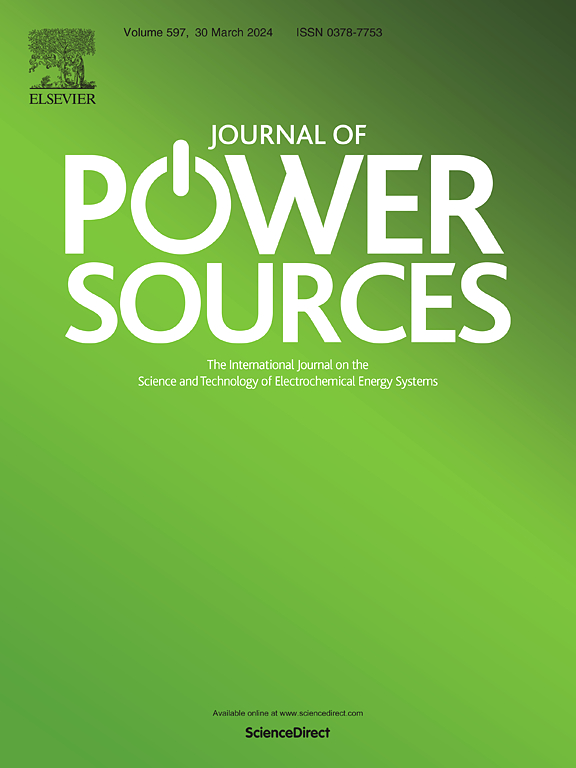High-performance crystalline nanocellulose (CNC) supercapacitor separator: Achieved by maximizing alkali-induced gel stress-response prior to aerogel compression forming
IF 8.1
2区 工程技术
Q1 CHEMISTRY, PHYSICAL
引用次数: 0
Abstract
This study presents the design and fabrication of high-performance separators for supercapacitors based on a novel finding relating to the structural response between alkali ions and cellulose nanocrystals (CNC). Unlike prior art, the CNC-to-ion ratio was specifically chosen following an observed bimodal rheological stress response to applied strain. The stress maximum passed at higher ion concentration was taken to indicate an optimally permeable cellulose cage-structure development, verified by microscopic imaging of the resultant freeze-dried aerogel. The compressed dried structure demonstrates excellent overall performance, including high average nano hardness (∼122 MPa) and ionic conductivity (∼103.5 mS cm−1) after rewetting at 80 w/w% solids content, outperforming commercial borosilicate glass microfiber separator. Benefiting from its hydrophilicity and high porosity, the rehydrated separator demonstrated efficient potassium ion transport. Integrated into symmetric supercapacitor devices with glucose-derived mesoporous carbon electrodes (∼850 m2 g−1), the device delivers high specific capacitance (∼80 F g−1 at 10 mV s−1), high energy density (2.7 Wh kg−1 at 98.2 W kg−1), and approximately 95 % capacitance retention after 1000 cycles. These findings suggest that prior rheological identification of optimal structuration during ion addition to CNC in aqueous suspension greatly enhances the suitability of these innovative materials for renewable energy storage applications.

求助全文
约1分钟内获得全文
求助全文
来源期刊

Journal of Power Sources
工程技术-电化学
CiteScore
16.40
自引率
6.50%
发文量
1249
审稿时长
36 days
期刊介绍:
The Journal of Power Sources is a publication catering to researchers and technologists interested in various aspects of the science, technology, and applications of electrochemical power sources. It covers original research and reviews on primary and secondary batteries, fuel cells, supercapacitors, and photo-electrochemical cells.
Topics considered include the research, development and applications of nanomaterials and novel componentry for these devices. Examples of applications of these electrochemical power sources include:
• Portable electronics
• Electric and Hybrid Electric Vehicles
• Uninterruptible Power Supply (UPS) systems
• Storage of renewable energy
• Satellites and deep space probes
• Boats and ships, drones and aircrafts
• Wearable energy storage systems
 求助内容:
求助内容: 应助结果提醒方式:
应助结果提醒方式:


